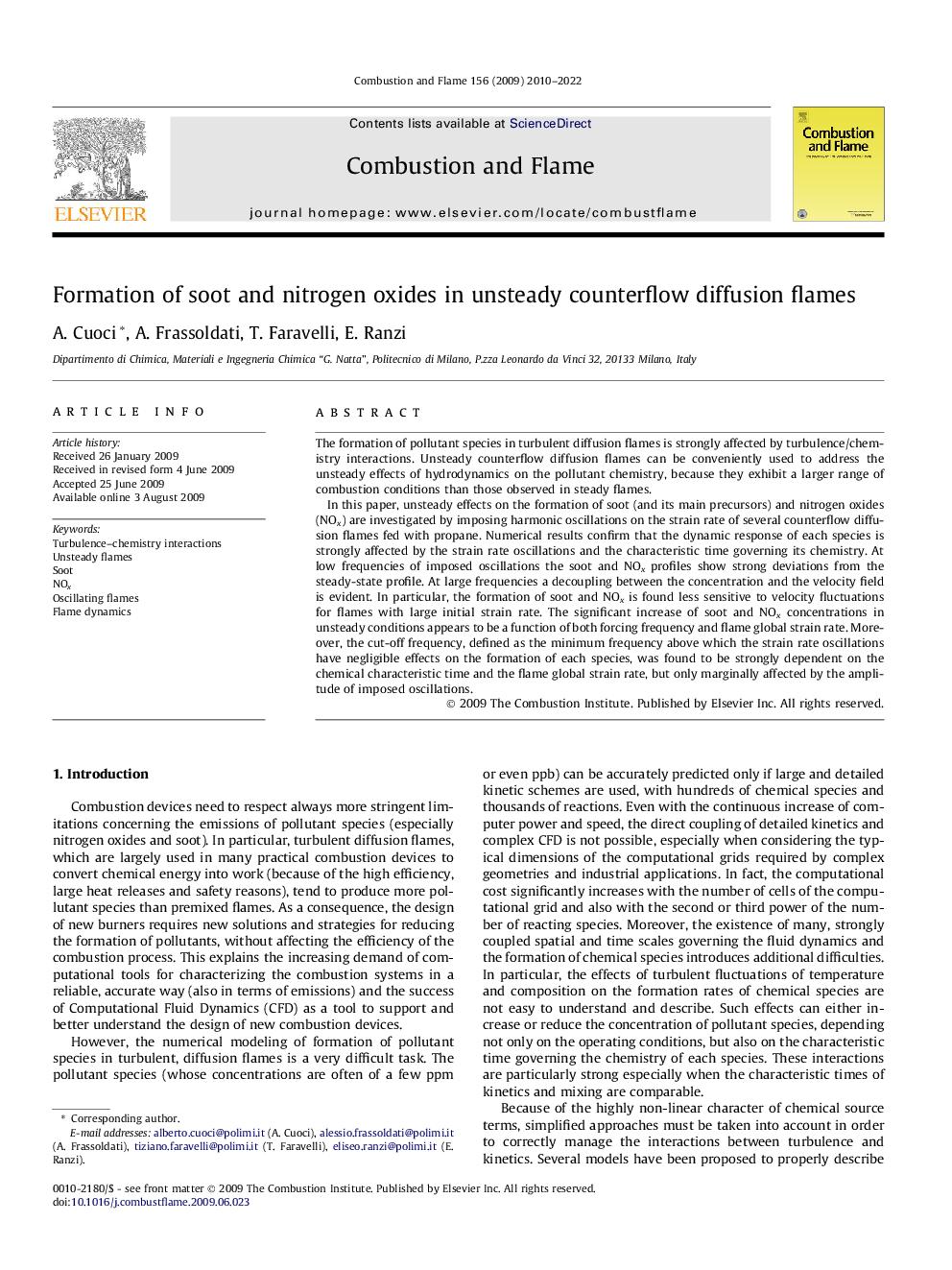| Article ID | Journal | Published Year | Pages | File Type |
|---|---|---|---|---|
| 166778 | Combustion and Flame | 2010 | 13 Pages |
The formation of pollutant species in turbulent diffusion flames is strongly affected by turbulence/chemistry interactions. Unsteady counterflow diffusion flames can be conveniently used to address the unsteady effects of hydrodynamics on the pollutant chemistry, because they exhibit a larger range of combustion conditions than those observed in steady flames.In this paper, unsteady effects on the formation of soot (and its main precursors) and nitrogen oxides (NOx) are investigated by imposing harmonic oscillations on the strain rate of several counterflow diffusion flames fed with propane. Numerical results confirm that the dynamic response of each species is strongly affected by the strain rate oscillations and the characteristic time governing its chemistry. At low frequencies of imposed oscillations the soot and NOx profiles show strong deviations from the steady-state profile. At large frequencies a decoupling between the concentration and the velocity field is evident. In particular, the formation of soot and NOx is found less sensitive to velocity fluctuations for flames with large initial strain rate. The significant increase of soot and NOx concentrations in unsteady conditions appears to be a function of both forcing frequency and flame global strain rate. Moreover, the cut-off frequency, defined as the minimum frequency above which the strain rate oscillations have negligible effects on the formation of each species, was found to be strongly dependent on the chemical characteristic time and the flame global strain rate, but only marginally affected by the amplitude of imposed oscillations.
